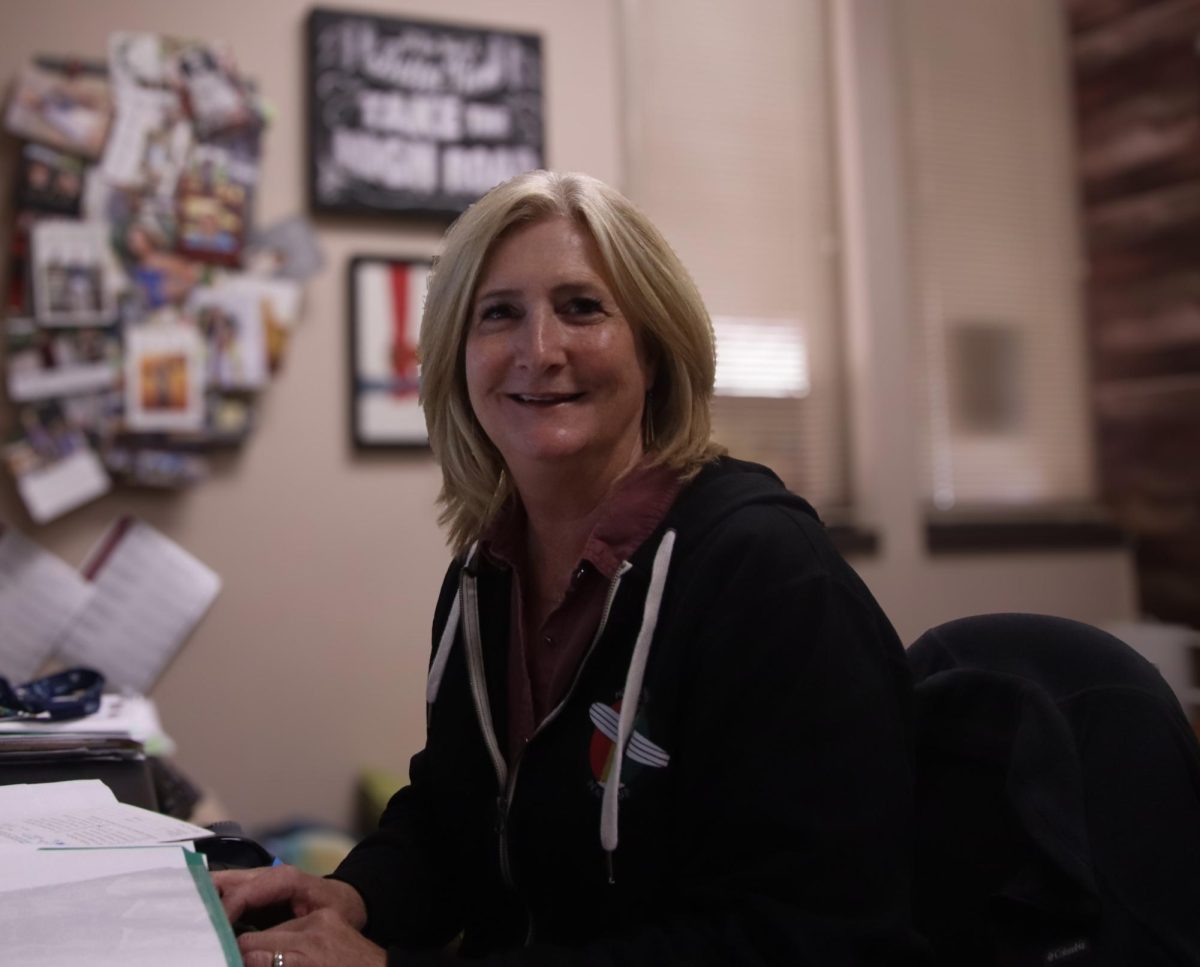Science teacher Evan Johnston remains teaching virtually during hybrid learning due to being immunocompromised
The Diagnosis
Though most students and teachers returned to campus to commence in-person instruction during the week of Mar. 15, some, like science teacher Evan Johnston, were forced to continue using

the distance learning format due to personal medical reasons. Although he was looking forward to returning to his classroom and teaching in person, bloodwork gathered in early Nov. 2020 revealed that Johnston was immunocompromised, meaning that he would have, “a higher risk of getting severely ill from COVID-19,” according to an article by CDC.gov on Dec. 16, 2020.
To be immunocompromised means that your immune system has more difficulty fighting infections and diseases like COVID-19, or as Pennsylvania State Medicine puts it, “your immune system’s defenses are low,” (pennmedicine.org). The duration of Johnston’s medical condition is unknown as he awaits future appointments to compare blood work. There is no pain or other symptoms that accompany his condition, the only caveat is that getting sick, especially COVID-19, is a far greater issue. However, Johnston received the Johnson and Johnson vaccine in early march.
“Some of my blood work that I’ve had to get indicates that I have antibodies that are attacking myself, and so rather than waiting to get sick and then having my body attack a foreign invader to defend itself, my body is defending itself against itself. My immune system is just weakened compared to yours; if I get sick I don’t have the defenses that you have to fight off the virus,” Johnston stated.
Because of this increased risk, Johnston has had to adapt by making more intensive lifestyle changes that reduce his chance of contracting the virus.
“Being at a greater risk of having a severe case of COVID means having to take a more thoughtfulness into my actions like when am I going to the grocery store — is it going to be crowded? Do they enforce people to wear masks properly? The threat of it just feels more resonant and close to home I guess,” Johnston said.
Missing out
Johnston still is able to teach while his face and any classwork materials are projected on the screen at the front of his classroom, as well as a camera being placed at the front so that he can physically see each student and still interact with them.
Though being able to interact with and teach his class while they’re physically present is more convenient than the distance learning format, Johnston can’t help but feel that he’s missing out while fellow colleagues and students return and he is still remaining at home.
“I’m so glad students are students are able to be in my classroom and that I can interact with them virtually, but I definitely can’t help but feel like I’m missing out and I think sometimes it’s a little like amplified because I get to hear about all of the genuine human interactions people get to have,” Johnston said.
The substitute

Since attending in-person instruction places Johnston at a heightened risk to contract COVID-19, he was forced to have a long-term substitute teacher, Matthew Hoy, be present in his first and second period classes. Hoy is an accomplished journalist, as he worked for The Lompoc Record, The Daily World (Aberdeen, Wash.), The North County Times (Escondido, Calif.) and The San Diego Union-Tribune throughout his 15 years as a journalist. Hoy has his own blog , hoystory.com, where he shares his thoughts on current issues. Hoy has also commented on the state of public education in the time of COVID in a Feb. 17 article where he discusses the shortcomings and unfortunate truths about distance learning.
“Distance learning last year was largely a joke. While all the students had been assigned Chromebooks, using them exclusively for their learning was often a steep curve—and that goes for many of the teachers too,” Hoy stated.
Hoy sympathized with low income families as well, who he felt were most affected, and expressed his goal of helping students return to the classroom
“Low-income families were hard hit. As a society we said, ‘well kids can take a break and bounce back.’ I don’t think that’s necessarily true. It certainly isn’t true for some kids. So, anything I can do to ensure that you guys are accountable in completing the work and have some social interactions with other students, that’s something that I really want to help with,” Hoy stated.
The future
Johnston looks forward to his return to in-person teaching but is unsure when that switch will actually take place for him. The vaccine is said to “increase in efficacy after two weeks” according to Professor of Medicine Monica Gandhi’s statements in a University of San Francisco article.
Gandhi also stated that “Immunogenicity data suggest the immune response may continue to improve even after 28 days”
Additionally, Gandhi praised the vaccine for its continued effectiveness.
“I do think it’s going to have even more efficacy after four weeks,” said Gandhi. “I call it the gift that keeps on giving.” Gandhi stated.
[button color=”white” size=”normal” alignment=”center” rel=”follow” openin=”samewindow” url=”www.crimsonnewsmagazine.org”]Return to Back to School 2021[/button]





